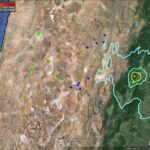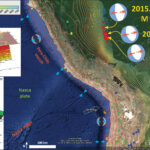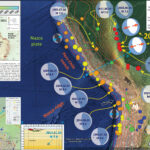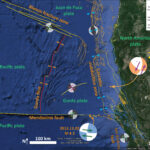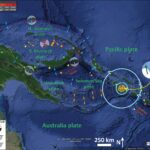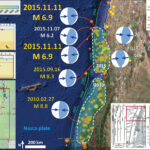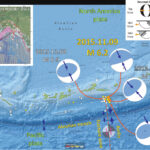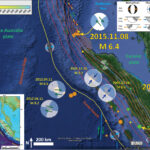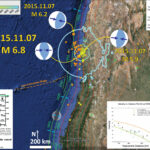We just had an earthquake in Argentina! Here is the USGS web page for this earthquake. At first, I thought, “oh, another deep earthquake.” I looked at the hypocentral depth The hypocenter is the 3-D location of the earthquake, while…
Earthquake Report: Deep in Peru, Update #1
There was an aftershock to the pair of M 7.6 earthquakes in Peru: an earthquake with magnitude M = 6.7 in Brazil. Here is the USGS web page for this earthquake. I reported about the M 7.6 earthquake pair here.…
Earthquake Report: Deep in Peru!
Today we had a series of deep focus earthquakes in Peru. This suite of earthquakes occurred in a region that ruptured in the 1960s and recently in 1990. Further to the south, in 1994, there was a deep earthquake that…
Earthquake Report: Humboldt County, CA!
Tonight we had a small earthquake offshore of northern California, northwest of Trinidad. Here is the USGS website for this earthquake with a magnitude of 3.2. At first glance, this earthquake appears to be close to the location of the…
Earthquake Report: Solomons!
Today we had a good sized earthquake along the S. Solomon trench, however, it was not a subduction zone earthquake, but a strike-slip earthquake in the downgoing plate. Here are the largest earthquakes plotted in the map below. S. Solomon…
Earthquake Report: Greece!
Late last night (my time) there was an earthquake in Greece with a USGS magnitude of M = 6.5. Here is the USGS web site for this earthquake. Greece is at the intersection of a complex configuration of plate boundaries.…
Earthquake Report: Chile in 2015!
The patch of the Chile subduction zone that ruptured in September 2015 continues to have large magnitude aftershocks. Today (2015.11.11) there were two M = 6.9 earthquakes in the northern part of this region. Four days ago (2015.11.07) there was…
Earthquake report: Aleutian subduction zone at the Amlia fracture zone update
Today (2015.11.09) we had another moderate sized earthquake along the Aleutian subduction zone, the largest of four earthquakes of magnitude mid 5-6. My initial earthquake report form 2015.11.02 can be found here. Here are the USGS web sites for the…
Earthquake Report: Nicobar Isles and Sumatra!
This past 24 hours include two large earthquakes in the region of the Sumatra-Andaman subduction zone offshore of Sumatra. Here is a map using the USGS online GIS interface. Here are the two large earthquakes posted on the USGS websites:…
Earthquake Report: Chile!
This past evening there were several earthquakes in the region of the 2015 Cocquimbo earthquake region. The largest earthquake has a USGS magnitude M = 6.8. Here are the three largest earthquakes, in order of occurrence: 2015.11.07 M 6.2 2015.11.07…

